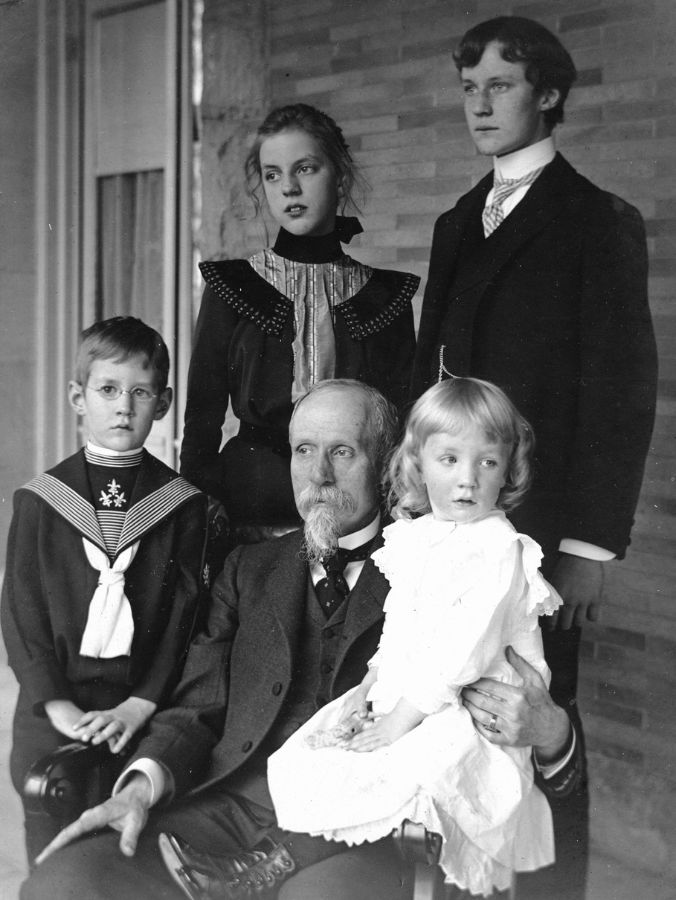-
Who We Are
Who We Are
For the last century, we’ve dedicated ourselves to empowering families like yours to prosper and endure. Like many of the leading families we serve, we have been through our own wealth journey.
Discover Pitcairn -
What We Do
Wealth Momentum®
The families we serve and the relationships we have with them are at the center of everything we do. Our proprietary Wealth Momentum® model harnesses powerful drivers of financial and family dynamics, maximizing the impact that sustains and grows wealth for generations to come.
Explore - Insights & News

Most clients believe the quality of their wealth management experience depends on their advisor’s expertise, empathy, or ethics. Those qualities certainly matter — but they’re only part of the equation.
The real influence on how advice is delivered often sits several layers above the client relationship — on the capital table. Because who owns the firm determines how the firm behaves, and in turn, how advisors serve their clients.
Ownership: The Hidden Operating System
Every wealth management firm runs on an invisible operating system — its ownership structure. That structure defines what success looks like, how it’s measured, and what gets rewarded. A private equity–backed aggregator with a five-year liquidity horizon lives and breathes short-erm growth. A 100-year family-owned firm can afford to think in generations. Both can deliver results, but they prioritize very different client experiences.
Ownership defines incentives. Incentives shape behavior. Behavior drives client experience.
When Capital and Culture Collide
Firm culture often gets the credit (or blame) for advisor behavior — but culture is downstream of ownership. If investors expect a liquidity event within a few years, that expectation seeps into the advisory process: sales cycles tighten, pipelines accelerate, and client segmentation narrows.
Conversely, when ownership takes a generational view, advisors act less like sellers and more like stewards. They think in terms of legacy, not quarterly production.
As one industry observer put it: “Advisors absorb the time horizon of their ownership. You can see it in how they listen, how they price, and how they define success.”
Incentives Shape Behavior
This isn’t theoretical—the research bears it out. A University of Oregon study confirms the impact that ownership incentives can have on client experience. After private equity takeovers, advisor misconduct rose 27% to 60%, driven largely by increased customer disputes. The researchers noted “a tension between advisory firms’ profit motive and ethical business practices,” particularly when serving financially unsophisticated clients.
Similarly, a review by the Strategic Management Society Journal found that ownership changes “alter firm monitoring, investment horizons, and operational behavior.”
The data is clear: capital structure drives culture, and culture drives client experience.
The Client’s Blind Spot
Clients rarely see the capital table — but it shapes everything. Choosing a wealth management partner isn’t just about investment philosophy; it’s about incentive alignment.
When you know who owns your advisory firm — and what those owners expect in return — you gain valuable insight into how your experience will unfold.
- Investor-owned firms may optimize for valuation.
- Partner-owned firms may optimize for continuity.
- Family-owned firms may optimize for legacy.
Each path creates a distinct client journey.
From Chaos to Clarity: The Pitcairn Perspective
At Pitcairn, our 100-year family ownership defines how we serve clients. We think generationally, not transactionally,
and we align our incentives with families who share that horizon. We’re not managing to an exit — we’re managing to an outcome.
When evaluating an advisory firm, don’t just ask what they do — ask who owns them and what those owners expect.
Because that answer reveals whether your advisor operates under pressure or purpose. And in the long run, that difference determines everything about your experience.
Disclaimer: Pitcairn Wealth Advisors LLC (“PWA”) is a registered investment adviser with its principal place of business in the Commonwealth of Pennsylvania. Registration does not imply a certain level of skill or training. Additional information about PWA, including our registration status, fees, and services is available on the SEC’s website at www.adviserinfo.sec.gov. This material was prepared solely for informational, illustrative, and convenience purposes only and all users should be guided accordingly. All information, opinions, and estimates contained herein are given as of the date hereof and are subject to change without notice. PWA and its affiliates (jointly referred to as “Pitcairn”) do not make any representations as to the accuracy, timeliness, suitability, completeness, or relevance of any information prepared by any unaffiliated third party, whether referenced or incorporated herein, and takes no responsibility thereof. As Pitcairn does not provide legal services, all users are advised to seek the advice of independent legal and tax counsel prior to relying upon or acting upon any information contained herein. The performance numbers displayed to the user may have been adversely or favorably impacted by events and economic conditions that will not prevail in the future. Past investment performance is not indicative of future results. The indices discussed are unmanaged and do not incur management fees, transaction costs, or other expenses associated with investable products. It is not possible to invest directly in an index. Projections are based on models that assume normally distributed outcomes which may not reflect actual experience. Consistent with its obligation to obtain “best execution,” Pitcairn, in exercising its investment discretion over advisory or fiduciary assets in client accounts, may allocate orders for the purchase, sale, or exchange of securities for the account to such brokers and dealers for execution on such markets, at such prices, and at such commission rates as, in the good faith judgment of Pitcairn, will be in the best interest of the account, taking into consideration in the selection of such broker and dealer, not only the available prices and rates of brokerage commissions, but also other relevant factors (such as, without limitation, execution capabilities, products, research or services provided by such brokers or dealers which are expected to provide lawful and appropriate assistance to Pitcairn in the performance of its investment decision making responsibilities). This material should not be regarded as a complete analysis of the subjects discussed. This material is provided for information purposes only and is not an offer to sell or the solicitation of an offer to purchase an interest or any other security or financial instrument.






